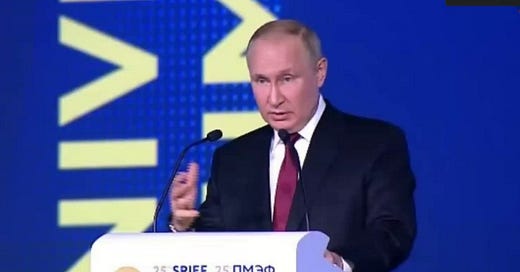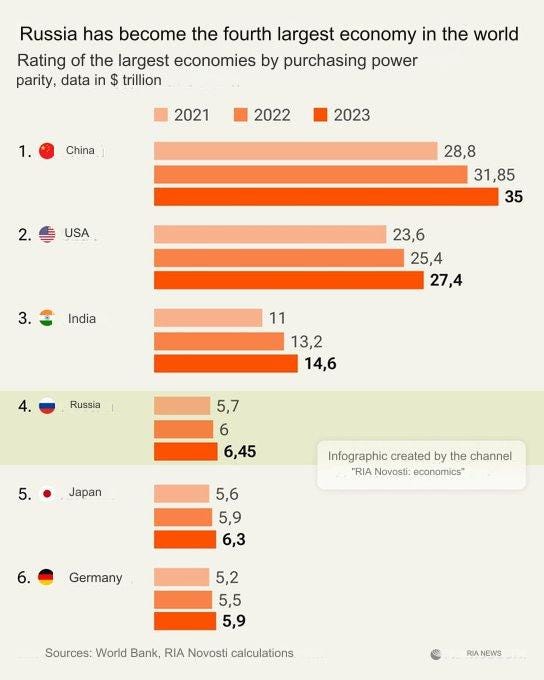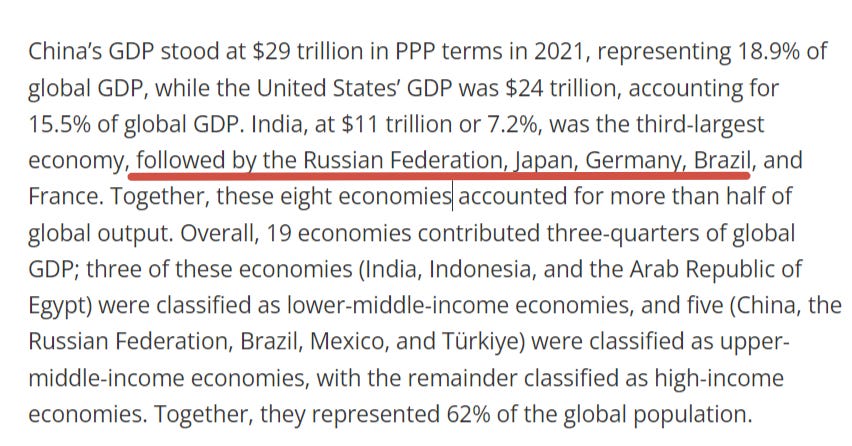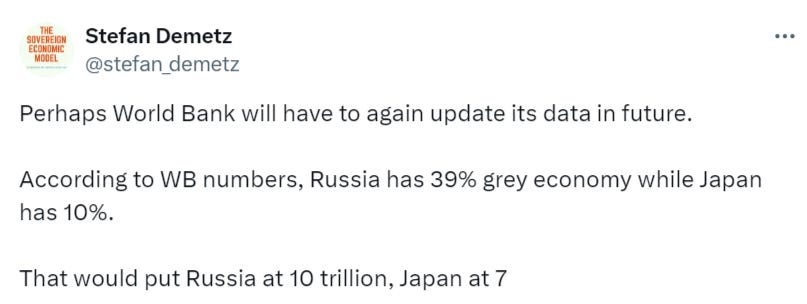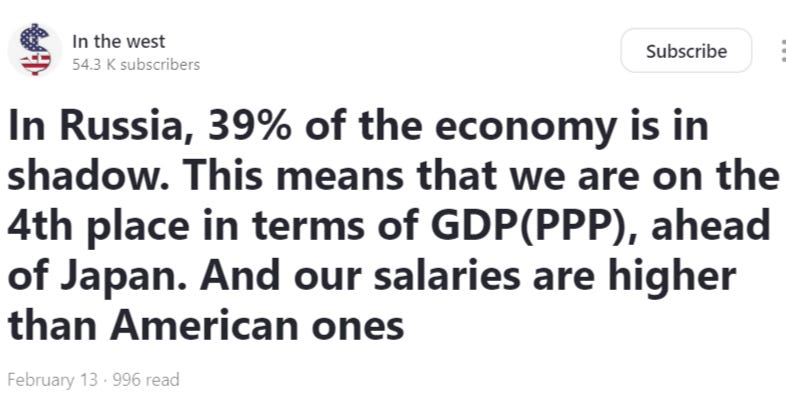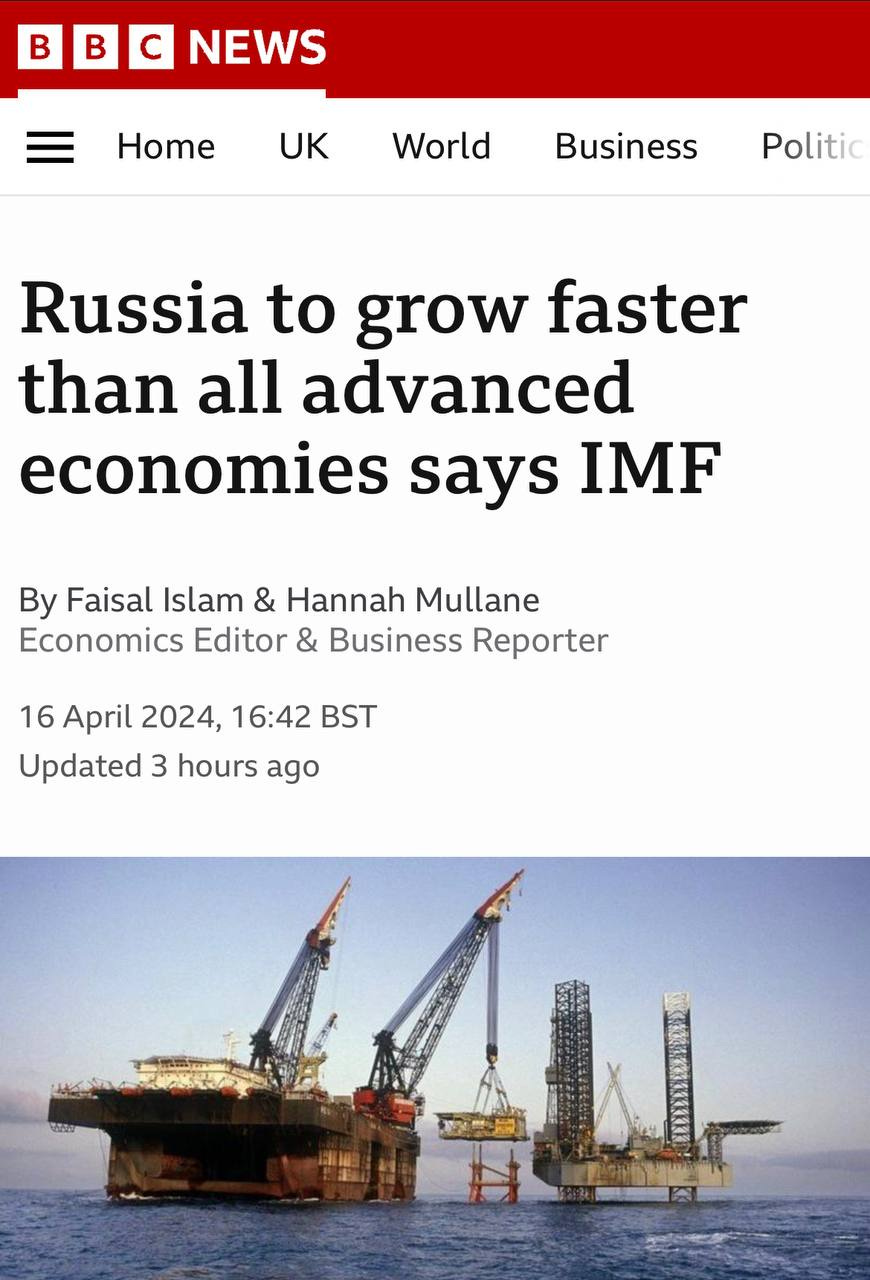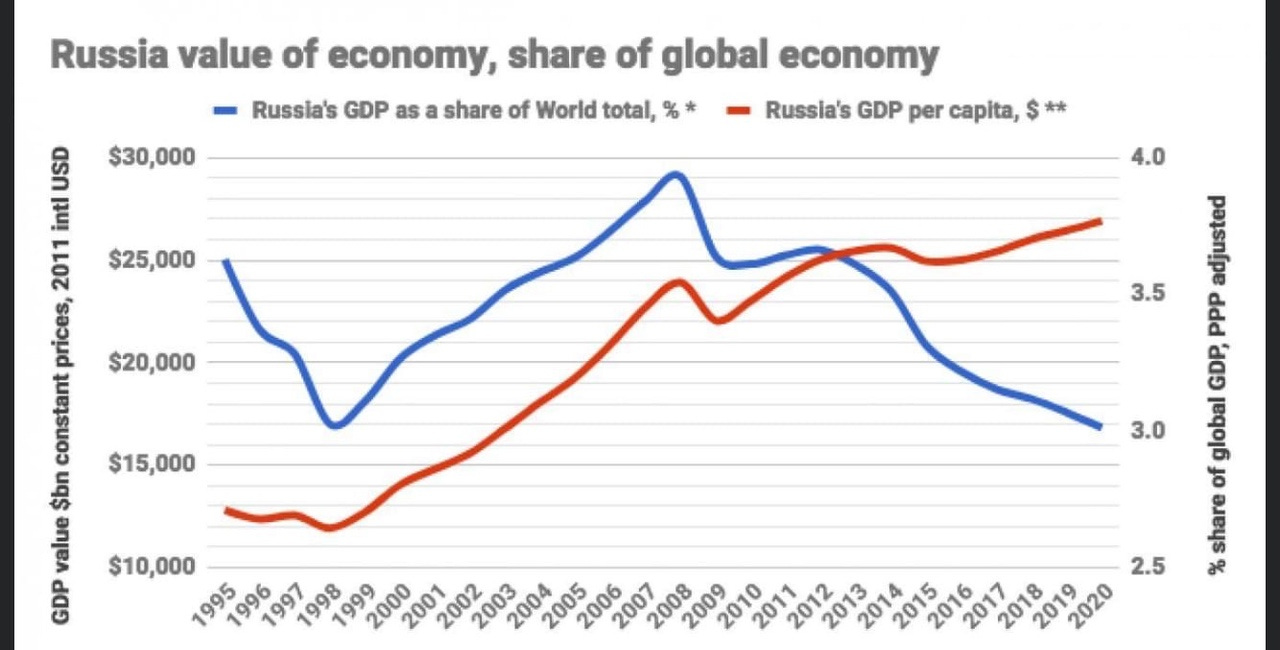Many will recall last year’s news that Russia had overtaken Germany for the 5th spot in GDP PPP. At the SPIEF, Putin announced that Russia has now officially surpassed Japan for the 4th spot, according to the World Bank:
But first a little background:
This may seem like old news, as people have posted Russia’s putative overtaking of Japan’s economy several months ago. However, there was much confusion as the source most used was a UK website called World Economics, which they conflated with the World Bank but which is in fact not an ‘official’ source of any kind.
What has happened now is that the World Bank announced last week that they have revised their GDP figures from 2021 onward, and in those revisions they have found that Russia had already surpassed Japan even as far back as 2021, and has continued pulling ahead up to now.
Here is their official release: https://www.worldbank.org/en/news/press-release/2024/05/30/global-purchasing-power-parities-data-released-for-2021
WASHINGTON, May 30, 2024 — New purchasing power parities (PPPs), which provide a standardized way to assess the relative buying power of different economies, were released today by the International Comparison Program (ICP) for the reference year 2021.
They have a variety of links to various charts and visualizations.
And in fact, Russia is now increasingly pulling ahead of Germany, leaving it in the dust at 6.45t vs. 5.9t. Not to mention that India’s figure is 10.9t, with Russia having only 1/10th the population of India yet more than half of its economic power. What’s more is that official sources report Russia has a ~40% gray economy which cannot be accounted for, virtually the highest in the world:
Here’s a whole Russian article from early this year discussing it in detail:
Bear in mind this was even before the official World Bank announcement of Russia’s surpassing of Japan. The article notes:
The other day, the World Bank published a report on the shadow economy by country, according to which it accounts for about 5% of total GDP in Japan, 8% in America, and as much as 39% in our country, Russia.
The shadow economy index in Russia is one of the highest in the world, almost 84% higher than the global average. Only Ukraine (46% of GDP, or UAH 1.1 trillion), Nigeria (48% of GDP) and Azerbaijan (67% of GDP) have a larger economy in the shadow. In fifth place is Sri Lanka with an indicator of 38%.
It goes on to anecdotally explain that many Russians earn up to a third of their salaries from off-the-books gray markets, with millions of ads for ‘unofficial’ services attesting to this.
That means Russia’s true concealed economic might may be even far higher and actually closer to that of India’s. I have already argued at length that Russia, being the most sanctioned and economically undermined and terrorized country on earth, via embargoes and outright industrial sabotage like the Nordstream attacks, may be underachieving—for now—while hiding a far more powerful economy than current records imply. If you take away those artificial handicaps unfairly gimping Russia’s economy, then it is almost certain that Russia’s true unmeasured economic might is that of 3rd place behind China and the U.S. It’s remarkable that even under unparalleled attack, Russia is able to command one of the fastest growing and most robust economies in the world.
Economist Stefan Demetz also correctly notes that Russia’s uniquely low debt structure and self-sufficiency in the form of trade surplus makes its economic value even higher than it seems:
World Bank recently reclassified PPP GDP data and Russia became 4th ahead of Japan and Germany.
But considering very low debt vs high reserve levels and self sufficiency on energy, food, military Russia looks better than these charts indicate.
There are many who doubt the significance of the PPP index as compared to nominal GDP, believing the inculcated Western lie that regular GDP is the ‘real one’ while PPP is just a ‘creative’ but ultimately spurious reformulation. But that is far from the truth, at least when it comes to trade surplus countries, specifically: for them PPP is the real economic indicator.
That’s because nominal GDP is priced in dollars (USD) and therefore is only relevant if you primarily use those dollars to purchase things, which is what’s done by countries who do a lot of importing of their goods, since most goods on the world markets are bought in the global ‘reserve currency’ of the USD. But Russia is a trade surplus, which means it exports far more than it imports. It is self sufficient and doesn’t need to price much in dollars, but rather in its own currency. When that is done, the “nominal” GDP priced in dollars becomes irrelevant and does not apply. And the few things Russia does import, it now settles in other native currencies, like Yuan with China, etc. In short: for countries like Russia, GDP PPP is the only accurate measure of economic size and power, it is the nominal GDP which deceptively prices the target country’s economy in terms of a foreign currency (USD) that it doesn’t even use in its internal markets and which skews the numbers based on fluctuations of currency exchange valuations.
You can read much more about this in my previous article on the topic:
This will end the free portion of the article. After the jump, we’ll be seguing into the current global economic developments, with a focus on the U.S. in particular, juxtaposing the rise of the BRICS with that of the declining West, with special highlight paid to the fraudulent economic numbers recently released by the Biden administration and what grim outlook it poses for the future of the entire Western financial order.
Keep reading with a 7-day free trial
Subscribe to Simplicius's Garden of Knowledge to keep reading this post and get 7 days of free access to the full post archives.


